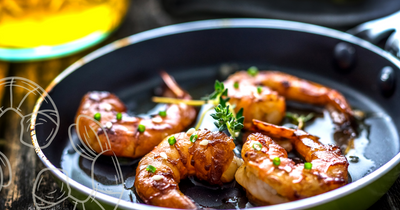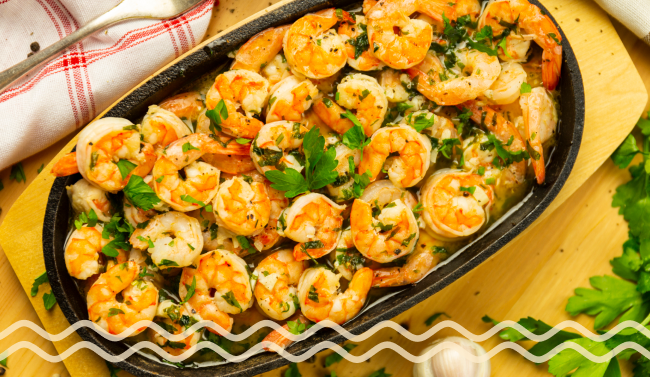Cooking Shrimp: Should You Use Butter or Oil?
Texas Gold Shrimp on 15th Nov 2024
Have you ever found yourself standing in front of your stove, pondering whether to cook shrimp in butter or oil? We've all been there. This culinary quandary isn't just about flavor; it's about achieving that perfect texture and knowing how to tell if shrimp is cooked to perfection. As we dive into this sizzling debate, we'll explore the science behind cooking these delectable crustaceans and uncover the secrets to a quick dinner that's both delicious and perfectly cooked.
We'll examine butter's role in shrimp dishes and how oil serves as a cooking medium for these seafood delights. We'll also explore techniques for combining butter and oil, giving you the best of both worlds. Along the way, we'll share tips on seasoning, cooking time, and how high heat affects your shrimp. Whether you're a fan of sautéing or prefer a different method, we've got you covered. So, let's jump in and discover the ins and outs of cooking shrimp to create a meal that's sure to impress.
The Science Behind Cooking Shrimp
Protein Structure
Shrimp is packed with protein, making up about 20% of its weight. This protein plays a crucial role in how shrimp cooks and tastes. When we cook shrimp, we change the structure of these proteins. Raw shrimp proteins are tightly folded, but they start to unfold and change shape as we apply heat. This process, called denaturation, has a significant impact on the texture and appearance of the shrimp.
Heat Reaction
As we cook shrimp, several changes occur due to heat. The most noticeable is the color change from blue-gray to pink. This happens because of a molecule called astaxanthin, which is usually hidden by proteins in raw shrimp. When heat breaks down these proteins, the pink color is revealed. The shrimp also become opaque and curl into a C-shape as they cook. These visual cues help us determine when shrimp are perfectly cooked.
Flavor Infusion
The cooking method we choose - whether it's sautéing in butter or oil - has a big impact on flavor. As shrimp cook, they release juices that mix with the cooking fat, creating a flavorful sauce. Butter adds richness, while oil can help achieve a higher cooking temperature without burning. Some chefs even combine the two for the best of both worlds. The key is to cook shrimp quickly at high heat to seal in the juices and prevent overcooking, which can lead to a rubbery texture.
Butter's Role in Shrimp Dishes
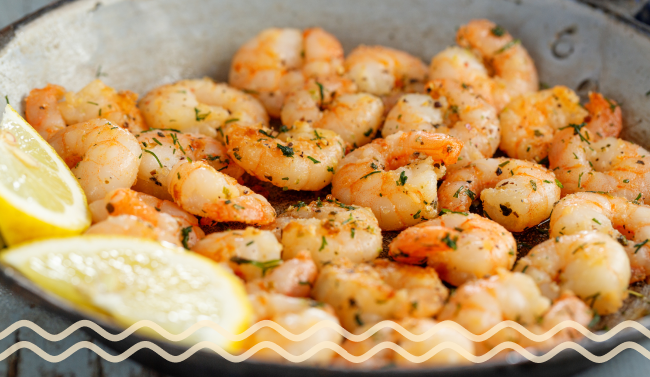
Traditional Uses
Butter has long been a favorite for cooking shrimp, especially in classic dishes. One traditional recipe involves boiling shrimp in a mixture of butter, onions, and seasonings. This method infuses the shrimp with rich, buttery flavor while keeping them tender. Many cooks swear by butter for its ability to complement the natural sweetness of shrimp.
Flavor Enhancement
When it comes to enhancing flavor, butter is hard to beat. It adds a creamy richness that pairs beautifully with shrimp's delicate taste. Garlic butter shrimp is a prime example of this delicious combination. The butter acts as a carrier for other flavors, allowing ingredients like garlic, herbs, and lemon to penetrate the shrimp more effectively. This results in a dish that's bursting with savory goodness.
Texture Contribution
Butter plays a crucial role in achieving the perfect texture when cooking shrimp. As it melts, it creates a luscious sauce that coats each shrimp, keeping them moist and succulent. The milk solids in butter also help to create a golden-brown crust on the exterior of the shrimp when pan-frying, adding a delightful contrast to the tender interior.
However, it's important to note that butter has a lower smoke point than some oils. This means it can burn at high temperatures, potentially affecting the flavor and texture of the shrimp. To get around this, many chefs use a combination of oil and butter when cooking shrimp. They start with oil to sear the shrimp at a high temperature, then add butter towards the end for flavor. This technique allows for the best of both worlds - perfectly cooked shrimp with that irresistible buttery taste.
Oil as a Cooking Medium for Shrimp
Option 1:
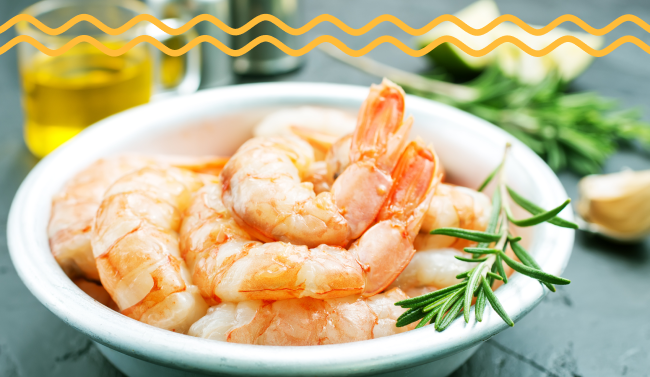
Option 2:
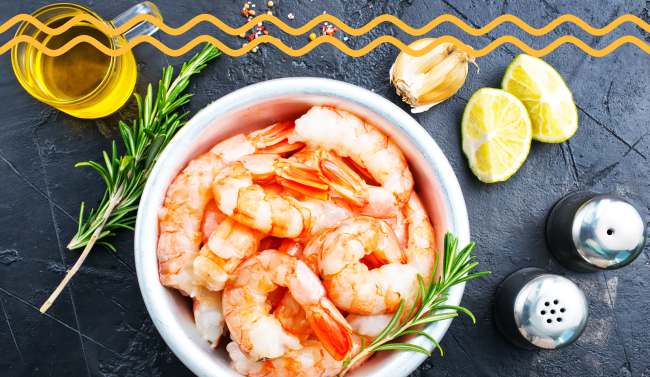
Types of Oils Suitable
When it comes to cooking shrimp, choosing the right oil can make a big difference. Olive oil is a popular choice, adding a subtle flavor while keeping the shrimp moist. Some cooks prefer extra virgin olive oil for its rich taste. If you're after a more neutral flavor, canola or vegetable oil works well. These oils let the natural taste of the shrimp shine through. Avocado oil is another option, offering a high smoke point and a mild flavor.
Heat Stability
One of the main advantages of using oil to cook shrimp is its heat stability. Oils like canola, vegetable, and grapeseed have higher smoke points than butter. This means you can crank up the heat without worrying about burning. High heat is key to getting that perfect sear on your shrimp while keeping the inside tender. It's a great way to achieve perfectly cooked shrimp in a quick dinner setting.
Flavor Neutrality
While butter adds its own distinct taste, oil offers a more neutral flavor profile. This can be a plus when you want the shrimp's natural sweetness to take center stage. It also allows you to experiment with different seasonings without competing flavors. Whether you're sautéing or using another cooking method, oil gives you a blank canvas to work with. You can add garlic, herbs, or spices to create your desired flavor profile without the oil interfering.
Combining Butter and Oil: Techniques and Benefits
Option 1:
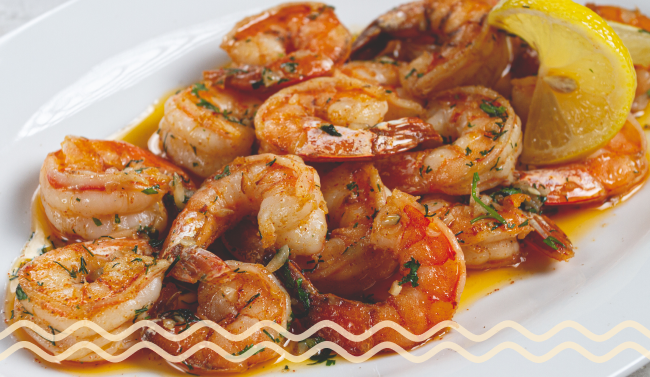
Option 2:
Method of Incorporation
When it comes to cooking shrimp, combining butter and oil can give you the best of both worlds. To incorporate these two fats effectively, start by heating oil in a pan over medium heat. Once the oil is hot, add the shrimp and cook for a minute or two. Then, introduce butter to the pan. This method allows you to take advantage of oil's higher smoke point while still enjoying butter's rich flavor.
Flavor Balancing
The combination of butter and oil creates a unique flavor profile that enhances the natural sweetness of shrimp. Oil provides a neutral base, allowing the shrimp's taste to shine through. Butter, on the other hand, adds a creamy richness that complements the seafood beautifully. To balance these flavors, use a 50/50 ratio of butter to oil. This blend gives you a perfect harmony of taste without overpowering the delicate shrimp.
Temperature Control
One of the main benefits of using both butter and oil is better temperature control. Oil's higher smoke point allows you to cook at higher temperatures without burning, which is crucial for achieving that perfect sear on your shrimp. Adding butter later in the cooking process prevents it from burning while still infusing the dish with its delicious flavor. This technique helps you cook shrimp quickly and evenly, resulting in perfectly cooked shrimp that are tender on the inside and slightly crispy on the outside.
By combining butter and oil, you can create a quick dinner that's both flavorful and well-cooked. This method gives you more control over the cooking process, allowing you to adjust the heat as needed to ensure your shrimp are cooked just right. Whether you're sautéing or using another cooking method, this combination technique is a game-changer for shrimp dishes.
Conclusion
The choice between butter and oil for cooking shrimp ultimately boils down to personal preference and cooking method. Oil's higher smoke point makes it ideal for high-heat cooking, allowing for a perfect sear while keeping the inside tender. On the flip side, butter brings a rich, creamy flavor that complements shrimp beautifully. For those looking to get the best of both worlds, combining butter and oil offers a balanced approach, marrying flavor with practicality.
Whether you're whipping up a quick dinner or planning a special seafood feast, understanding these cooking techniques can elevate your shrimp dishes to new heights. Experimenting with different fats, seasonings, and cooking methods will help you find your perfect shrimp recipe. For those keen on trying out high-quality seafood, you might want to check out wild-caught shrimp from Texas Gold Shrimp. In the end, the key is to cook shrimp quickly and attentively, ensuring they're perfectly done without becoming rubbery.

